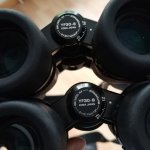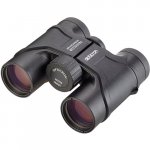I know many forum members are probably aware of what I am going to express, but I will do it either way, in the hope of helping others that might have never thought about it (as was my case) and also for the pleasure of sharing bino-experiences and discuss about them.
I’ve been a 8x binoculars user (I own and have owned 10x and 12x) and then some time ago I "fell under the spell" of 7x. First it was with a 7x35 Nikon Action Extreme; it was a revelation. The view was so “deep, crisp and serene” (for lack of a better description). I sold the EX because they were quite a brick. But I was already enchanted. From then on I’ve tried other flavours of 7x (from 7x42 to 7x33). And I’ve always enjoyed the same delightful view, I guess is a combination of well known factors like depth of field and steadier image.
Recently I have had a new lesser revelation: 6x. The Kowa YF 8x30 are one of my favourite binoculars, and lately I’ve been spending time with the 6x YF, and what a delight it has been! Everything I like from the 8x30 YF was there, but the image quality looked as if taken from a device from a higher tier: crisp, 3D, bright, clean, sharp as in 300-500 €/$ binoculars. My knowledge about the inner workings of optics is non-existant (little green men doing magic with tiny prisms, I understand). My guess is that a lower magnification makes the “feeling of image quality” easier to obtain (or, to put it in another words, the higher the magnification, the more difficult it is to get things right). But this is just a feeling. Sitting under a white mulberry tree with the 6x30 YF watching great tits, blackcaps and blackbirds was an eye-opener.
At the moment (as many other forum members, I guess) I’m waiting with great expectations the arrival of the new Kowa BD II XD 6.5x32 (which at 535 g could be a dream come true; I’ve just sold my 7x42 FL mainly due to size/bulk/prize). In the meantime, I’m reading many old threads where I find many fellow members describe their experiences with 6x and 7x… which I am finally able to understand (I know that 6x, or even 7x, might no be for everyone's taste or for every occasion).
I’ve learned about other 6x of note (Viking MD, Vortex Viper, etc.) and remarkable and affordable 7x (ZenRay ED2 7x36, Sightmark solitude, Opticron BGA SE, etc.). What other lower magnification binoculars have provided or still delight you with this sort of “lesser revelation”?
I’ve been a 8x binoculars user (I own and have owned 10x and 12x) and then some time ago I "fell under the spell" of 7x. First it was with a 7x35 Nikon Action Extreme; it was a revelation. The view was so “deep, crisp and serene” (for lack of a better description). I sold the EX because they were quite a brick. But I was already enchanted. From then on I’ve tried other flavours of 7x (from 7x42 to 7x33). And I’ve always enjoyed the same delightful view, I guess is a combination of well known factors like depth of field and steadier image.
Recently I have had a new lesser revelation: 6x. The Kowa YF 8x30 are one of my favourite binoculars, and lately I’ve been spending time with the 6x YF, and what a delight it has been! Everything I like from the 8x30 YF was there, but the image quality looked as if taken from a device from a higher tier: crisp, 3D, bright, clean, sharp as in 300-500 €/$ binoculars. My knowledge about the inner workings of optics is non-existant (little green men doing magic with tiny prisms, I understand). My guess is that a lower magnification makes the “feeling of image quality” easier to obtain (or, to put it in another words, the higher the magnification, the more difficult it is to get things right). But this is just a feeling. Sitting under a white mulberry tree with the 6x30 YF watching great tits, blackcaps and blackbirds was an eye-opener.
At the moment (as many other forum members, I guess) I’m waiting with great expectations the arrival of the new Kowa BD II XD 6.5x32 (which at 535 g could be a dream come true; I’ve just sold my 7x42 FL mainly due to size/bulk/prize). In the meantime, I’m reading many old threads where I find many fellow members describe their experiences with 6x and 7x… which I am finally able to understand (I know that 6x, or even 7x, might no be for everyone's taste or for every occasion).
I’ve learned about other 6x of note (Viking MD, Vortex Viper, etc.) and remarkable and affordable 7x (ZenRay ED2 7x36, Sightmark solitude, Opticron BGA SE, etc.). What other lower magnification binoculars have provided or still delight you with this sort of “lesser revelation”?
Attachments
Last edited:






